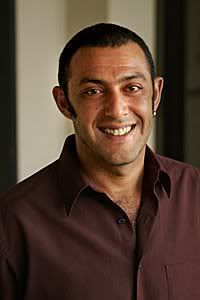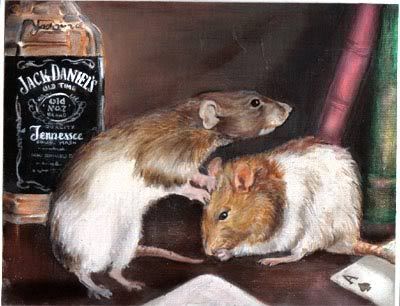History of the Nerd: The REAL Eternal Sunshine of The Spotless Mind
Eternal Sunshine of the Spotless Mind is possibly one of the most depressing movies to have been committed to film. Okay, Schindler’s List is still more depressing, but only because it has the Holocaust in it and that makes it a totally unfair fight. If you have never seen Eternal Sunshine of the Spotless Mind — it’s about Jim Carrey trying to get over a bitter break-up with Kate Winslet by erasing all his memories of her. For some reason, for me at least, the idea of the physican embodiment of one’s memories fills me with an intense horror that I just can’t shake even years after leaving the theatre or putting pants on to turn of the DVD. The feeling still isn’t gone, but it did evolve. Memories make up the tapestry of what makes me who I am. It’s just that sometimes I hate who I am. I wonder sometimes if I could pull out a bad memory like pulling out a stray thread from that tapestry would I be a better person? Or would my entire self unravel to someone unrecognizable? Thankfully through the wonderful magic that is science I can now find out. It even works a lot like it did in Eternal Sunshine.

It all really started with a young boy working at his father’s meat market. Cattle back then weren’t given the PETA-approved electro-bolt to the head when they headed for Hamburger Heaven. No, they were allowed a taste of sweet, sweet, lead in bullet form. The boy’s job was to feel through the brain to remove the bullet because when you sit down to a sandwich of creamy, fried, cow brains you don’t want to bite down on hard metal, cause that would be gross. (They really eat that stuff Missouri; I shit you not. Oh yeah, and it’s basically roast beef in Mexico.) When he touched the cow’s brains he wondered, was he touching the cow’s memories, was he touching their souls? That young boy was Jim Carrey… No that’s actually wrong, that boy was Joseph LeDoux. Joseph left the meat market and grew up to be a scientist.

In the 1960’s scientists discovered that when you administered a drug called Anisomycin to a fish, they were incapable of creating new memories. This lead to several discoveries, they learned that memories were concrete, physical things that can be measured and touched. They also learned that the building blocks of memories are proteins because Anisomycin is a protein inhibitor that blocks proteins from forming. If you take the drug — no proteins, no memories and then you end up like that asshole in Memento (only with less useful tattoos). Years later LeDoux would study the formation of memories in lab rats.

The experiment worked this way: LeDoux placed a rat into a box. In this box the rat was played a single tone then…he was shocked. LeDoux then laughed and laughed. The rat was conditioned to know that when they heard the tone there would be a mild shock. The rats actually braced themselves for it when they heard the tone. LeDoux afterwards injected a different rat with a drug called U0126 that prevented its neurons from creating the proteins that a new memory requires, and then something weird happened. They never create that new memory so they never equate the tone with shock. They are surprised every time. However if he did it to the rat that was already conditioned, the proteins are already formed and the memory exists, nothing happens. He believed that once memories were created they were there forever. He would have continued to believe that if it wasn’t for Karim Nader — the Barack Obama of the experiment. Look at him! How hansome is he? Right?!…Moving on….

Karim Nader was a colleague and friend of Joseph LeDoux. Karim was the kind of friend that would just show up and throw out questions, which he often did to LeDoux. In 2000, Karim dropped by LeDoux’s lab and asked him what would happen if instead of giving the rat a shock while they were making a new memory, they gave it the drug when it was remembering the memory. Karim just thought it would be cool if it messed with the memory then. Joseph just thought it was a really stupid suggestion, a total waste of money and a waste of time. Well, as Naders do, Nader decided to waste money anyway. Several months later he returned to LeDoux and told him that it worked. He took a conditioned rat and administered the drug to it while it was remembering. Afterward the rat acted as if the memory never happened. It was pretty much a holy shit moment.

“My Rat friend, why do you look so much like a Hamster?”
” I…don’t…KNOWWW!!!”
LeDoux and Karim found that memories are recreated, then reimagined, every time we remember. When that act of recreation is in process and that process is disturbed then the memory is effectively gone. So each we remember it distorts the memory just a little bit every time — kind of like a mental copy machine where you only make copies of the copy — or like the retarded Michael Keaton in multiplicity, only with MEMORIES! The image becomes less and less correct, or true, each time. The time you first kissed your first love? Those great times you think about so often? More fake than a memory you never think about.
LeDoux and Karim moved on from messing with the memories of rats to the memories of people. They gave people a drug that affected only the emotional aspect of the memory while the subject was remembering and the result was a person who remembered the details, but no longer had an emotional connection to the memory. Joseph LeDoux is the Henry and Lucy Moses Professor of Science at NYU’s Center for Neural Science, as well as director of the Center for the Neuroscience of Fear and Anxiety and Karim Nader is a professor at McGill University.
Researchers did a study in 2007 with 19 people who had traumatic memories of accidents or of rape and gave some a drug called Propranolol, a drug used to treat hypertension, but also was known to cause memory problems, and gave the others a placebo for 10 days, while they were asked to remember their horrible experience. Those who were given the drug suffered fewer signs of stress when they remembered.
Jim Carrey did the same thing in Eternal Sunshine of the Spotless Mind. He recalled his memory of his lost love and the scientist erased them. As it turns out, the movie came out just a few years after LeDoux and Karim published their paper on their findings. When asked, Michel Gondry, director of Eternal Sunshine of the Spotless Mind, said that the story was indeed inspired by LeDoux and Karim’s 2000 paper. Usually when writers create a story based on scientific concepts you get something incomprehensible like Grant Morrison’s Final Crisis or Grant Morrison’s Batman RIP or Grant Morrison’s The Filth, (okay that last one was mostly about porn, but there was a little science and it was still confusing), but Charlie Kaufman and Michel Gondry delivered a beautiful, haunting and heart breaking story. They even won an Oscar for best original screenplay, it’s just too bad they didn’t give LeDoux and Karim credit in the film.
I still wonder what kind of person I would be had I not experienced some of the more painful things of my childhood, but I feel that my memories are the patchwork of my soul — my tattered, patched-up-like-huck-finn’s-overalls soul. Deleting an aspect of it would feel like deleting an aspect of myself. This is all very easy for me today, but to the thousands of people that have lived through the kind of hell you only hear about splashed on news bulletins and unwatched documentaries, this could be the only ray of hope. These people could finally be unshackled by the people and moments that haunt and control them. They would still had been victimized, but they would no longer be victims. That would be something to hope for. Fucking. Awesome.

